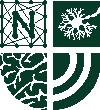Banca de QUALIFICAÇÃO: LUCIANE APARECIDA MOSCALESKI
Uma banca de QUALIFICAÇÃO de MESTRADO foi cadastrada pelo programa.DISCENTE : LUCIANE APARECIDA MOSCALESKI
DATA : 08/04/2022
HORA: 15:00
LOCAL: REMOTO
TÍTULO:
Effect of high definition transcranial direct current stimulation on visual strategy, cortical electrical activity and shooting performance in basketball
PÁGINAS: 50
GRANDE ÁREA: Ciências da Saúde
ÁREA: Educação Física
RESUMO:
It is a qualifying exam aimed at moving on to a Ph.D. The initial master's idea involved eye-tracking and neuromodulation in a basketball shooting task. For the Ph.D., neuroimaging will be included, specifically electroencephalography (quantitative analyses and connectivity). Performance in sports is determined by the athletes' perceptual, cognitive, and motor skills. The development of these skills is usually accompanied by structural and functional reorganization of the brain. It involves optimizing oscillatory activity patterns in specific regions and a brain network. In this sense, information processing in the central nervous system of athletes has become an object of interest in sports science. That said, Neuroscience has a fundamental role in understanding the organization of the "brain-brain and brain-body" dynamics, allowing research in the sports context. Historically, studies related to the high-performance sport are associated with analyzing motor aspects such as athletes' strength, speed, aerobic power, and body composition. Each athlete's strategic role and training planning are often limited to these aspects. Therefore, in contrast to this knowledge about the different physiological adaptations to physical training, the perceptual-cognitive characteristics in sports are less understood. However, with the technological evolution of psychophysics (e.g., eye tracker - ET) and neuroimaging (e.g., electroencephalography - EEG) methods, it has become possible to investigate different systems, such as the visual system. Therefore, even the visual system remains poorly understood, especially in more ecological situations (field research), such as on a basketball court. The mechanisms arising from non-invasive brain stimulation to improve sports performance are even less understood. Notably, transcranial direct current stimulation (tDCS) is considered a neuromodulatory intervention that induces excitability changes in the human cortex and may contribute to sports performance. However, despite the advancement in knowledge of psychophysical neuroimaging methods and the plastic effect of CTE, it is still unknown whether the use of CTE would affect visual strategy in professional female basketball players, maximizing their results in shooting performance. High Definition CBT (HD-ETCC) promotes greater focus of the electrical current on the desired brain area and allows concomitant use with electroencephalography acquisition. Thus, the objectives of this study will be: (1) to establish comparisons between the visual strategy adopted among players of different levels in shooting performance; (2) to verify the effects of non-invasive brain stimulation on visual strategy, cortical activation, and shooting performance and (3) to establish a comparison between successful and unsuccessful shooting visual strategy and to investigate whether there is a pattern of neural connectivity that predicts success/unsuccess during a shooting in basketball. For the unfolding of this project, two studies will be necessary (two experimental designs). Study 1: The players will perform 60 shots with different difficulty levels (typical basketball training of their team), following a random order, using the eye-tracker. This study will compare the visual strategy in the shooting performance between players of different levels. Study 2: This will be a randomized, crossover, double-blind, experimental design. The athletes will perform 100 free throws (pre-HD-ETCC) and, in random order, will receive cathodic HD-ETCC or sham ETCC for 20 min. They will then perform another 100 free throws (post-HD-ETCC). At this stage, EEG will be measured continuously during the throwing protocol for further analysis (quantitative and connectivity). The hypotheses for each objective are: (1) players considered more experienced or those considered better shooters fix their gaze on the basket longer, (2) when combined with the HD-ETCC technique, they would improve their shooting efficiency, and (3) they would show a slowing of the frequency bands in the brain on the right shots and show a reorganization in the neural networks.
MEMBROS DA BANCA:
Presidente - Interno ao Programa - 1653406 - ABRAHAO FONTES BAPTISTA
Membro Titular - Examinador(a) Interno ao Programa - 2353089 - KATERINA LUKASOVA
Membro Titular - Examinador(a) Externo à Instituição - EDGARD MORYA - USP
Membro Suplente - Examinador(a) Interno ao Programa - 2418537 - DANIEL BOARI COELHO
Membro Suplente - Examinador(a) Externo ao Programa - 1544401 - ANDRE RICARDO OLIVEIRA DA FONSECA




